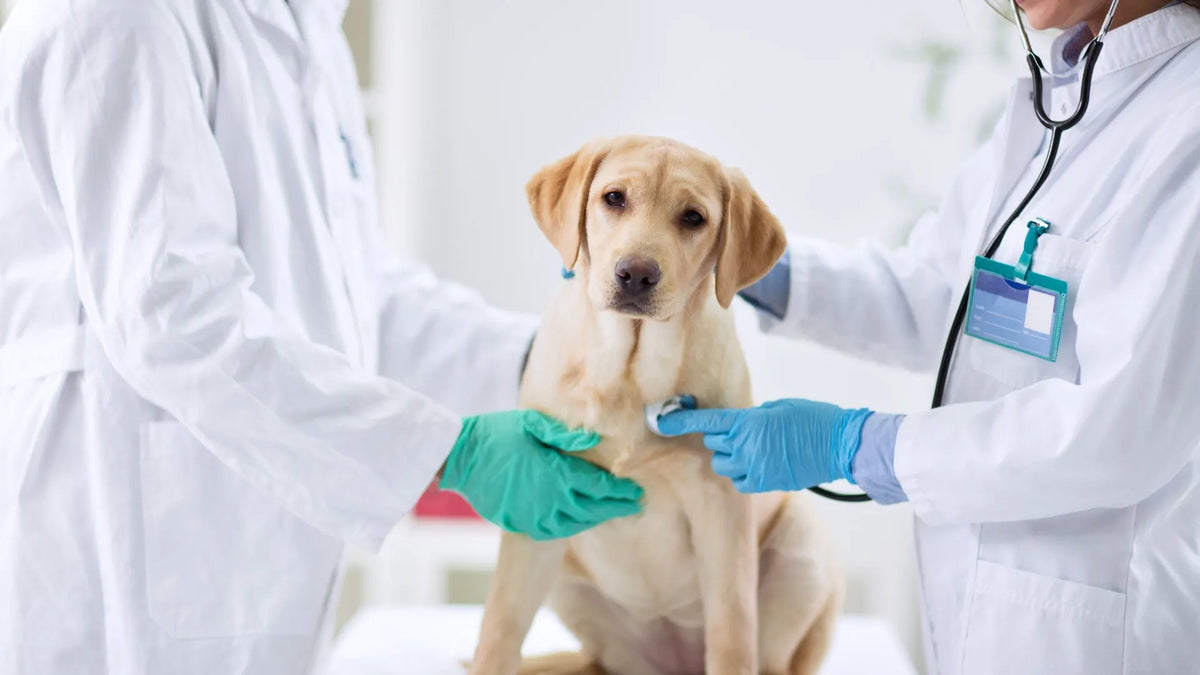In 24 cities

Keep Your Furry Friend Safe: Your Essential Guide to Protecting Against Ringworm
|
|
Time to read 6 min
Get product availability and delivery timelines based on your location.
Are you sure you want to delete this address?
Help us ensure a smooth delivery
Help us ensure a smooth delivery
SIZE GUIDE
|
|
Time to read 6 min
As loving pet parents, we want nothing more than to keep our furry companions safe and healthy. One issue that can often cause concern is ringworm. But what is ringworm, and how can we effectively protect our pets from this pesky fungal infection? In this guide, we’ll explore everything you need to know about ringworm, from its symptoms to prevention strategies, to help you safeguard your beloved pets.
Despite its name, ringworm is not caused by worms. Instead, it is a fungal infection known as dermatophytosis, which affects the skin, hair, or nails. The term "ringworm" originates from the characteristic circular, itchy rash that appears on infected skin. The most common culprits behind this infection are two types of fungi: Microsporum and Trichophyton.
Ringworm is highly contagious, and it can easily spread between pets and even from pets to humans. The transmission occurs through direct contact with an infected animal or by touching contaminated objects, such as brushes, bedding, or toys. Ringworm spores can even survive on surfaces for up to 18 months, making it crucial to practice preventive measures in your home.
Being aware of the symptoms of ringworm is essential for prompt treatment. Here are some common signs to look for in your furry friend:
Circular patches of hair loss: These are often accompanied by red, crusty edges.
Scaly skin: Look for areas of dry, flaky skin or excessive dandruff.
Inflammation and redness: The skin may appear inflamed and sensitive to touch.
Itching: Your dog may scratch or groom excessively in the affected areas.
Nail issues: Darkened, brittle, or misshapen nails can also indicate a ringworm infection.
Diagnosing ringworm in dogs involves several steps to ensure an accurate identification of the fungal infection. Here’s what the process typically includes:
The good news is that ringworm is treatable! Here’s what to expect in terms of treatment:
If your vet confirms a ringworm diagnosis, the first step is to isolate your dog from other pets to prevent the spread of the infection. Ideally, keep them in a clean, easy-to-sanitize space, such as a bathroom.
Bathing your dog regularly is crucial to removing fungal spores from their fur. Your vet may recommend:
In many cases, your vet will also prescribe oral antifungal medications to ensure a comprehensive treatment plan. It’s essential to follow your vet's instructions closely for dosage and duration.
Ringworm spores can linger in your home long after your pet has been treated. To eliminate these spores:
Recovery from ringworm in dogs can vary based on the severity of the infection and the treatment method employed. Most dogs respond well to antifungal medications, but recovery can take several weeks, and it's crucial to follow your veterinarian's instructions closely. During recovery, it’s important to:
Prevention is key to avoiding future outbreaks of ringworm. Here are some effective strategies:
Ringworm is a zoonotic disease, meaning it can be transmitted from animals to humans. The risk of contracting ringworm from an infected dog is generally low, but it can occur, especially in individuals with weakened immune systems or those who come into close contact with the infected animal. Here are some key points to consider regarding the risk to humans:
Ringworm in dogs, while a concerning condition, is manageable with prompt diagnosis and appropriate treatment. Understanding the symptoms, recognizing the risk it poses to both pets and humans and following through with the recommended treatment and prevention strategies can help ensure a swift recovery for your furry friend. Always remember, regular grooming and hygiene practices are essential in maintaining your dog’s overall health and minimizing the risk of future infections.
If your dog shows signs of ringworm or any other skin issues, don’t hesitate to consult your veterinarian for advice tailored to your pet's specific needs. For pet parents looking for high-quality grooming products and healthcare essentials, Supertails offers a range of solutions to support your dog's health and well-being. With the right care and attention, you can keep your dog happy, healthy, and free from ringworm.
Q1: Can I catch ringworm from my dog?
Yes, ringworm is zoonotic, meaning it can be transmitted from pets to humans. Always practice good hygiene when handling an infected pet.
Q2: How can I prevent ringworm in my dog?
Regular grooming, limiting exposure to infected animals, and maintaining a healthy immune system are crucial in preventing ringworm.
Q3: How long does treatment for ringworm take?
Most dogs recover within a few weeks to a few months, but follow-up vet visits are necessary to ensure the infection has cleared.
Q4: What should I do if I suspect my dog has ringworm?
Contact your veterinarian for a proper diagnosis and treatment plan as soon as possible.
Q5: Are there specific breeds more prone to ringworm?
Yes, breeds like Boston Terriers, Yorkshire Terriers, and Russell Terriers tend to be more susceptible, especially if they have weaker immune systems.
2 item in cart
₹10,360

